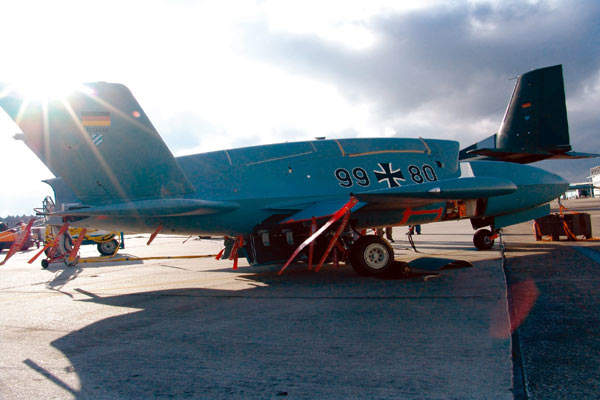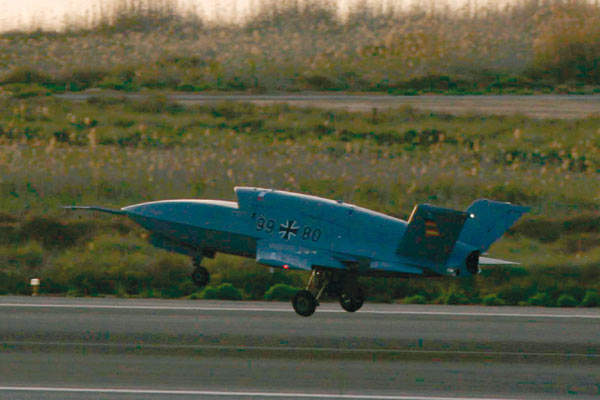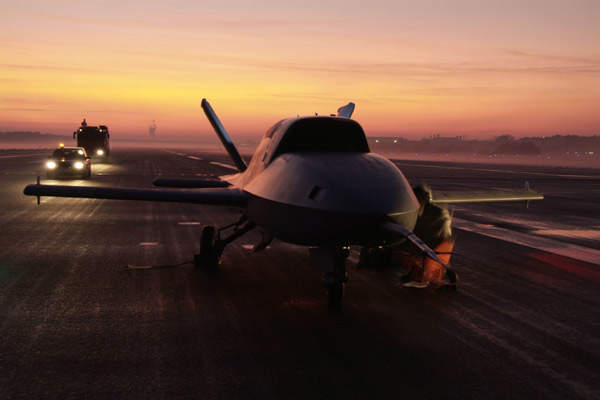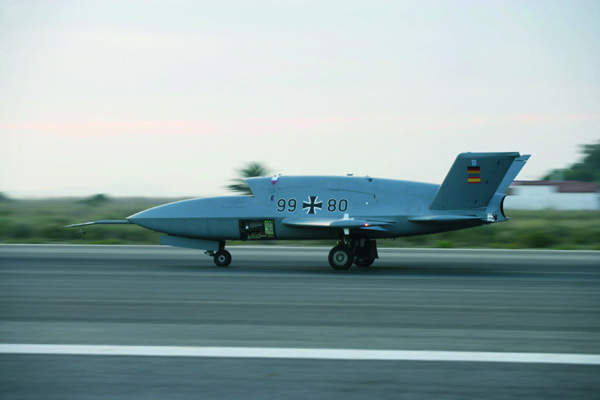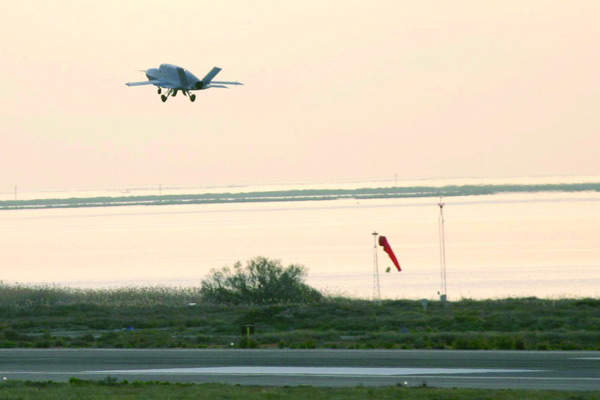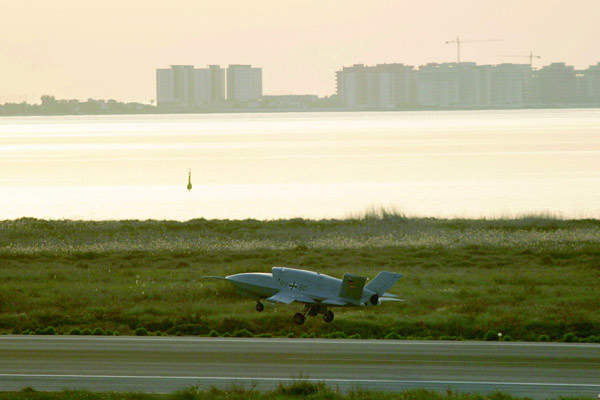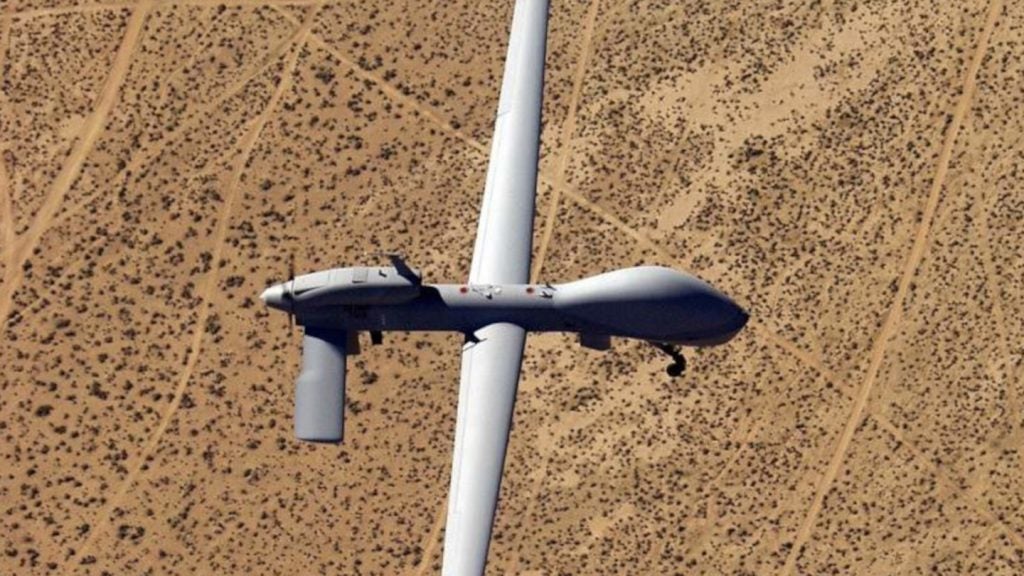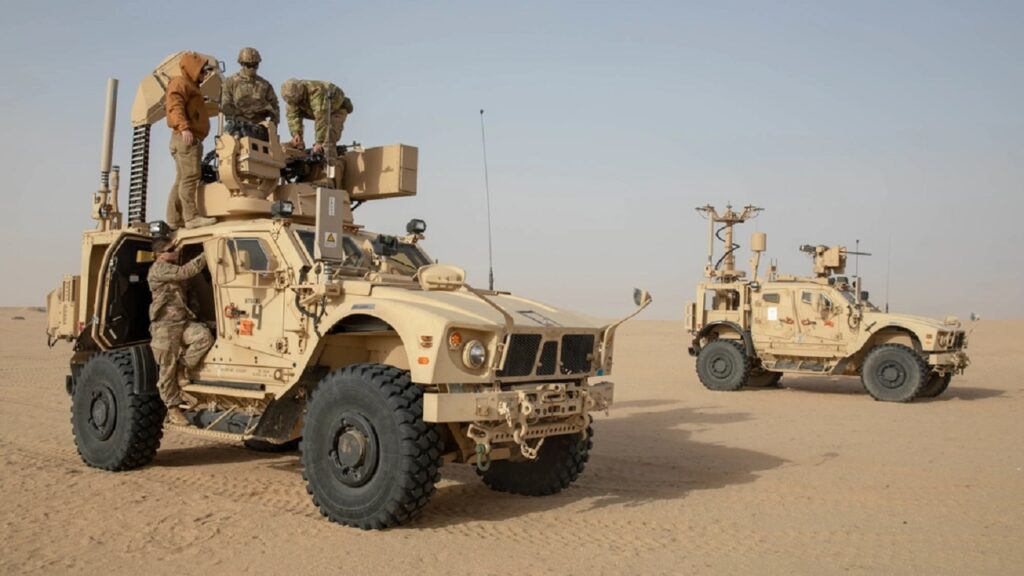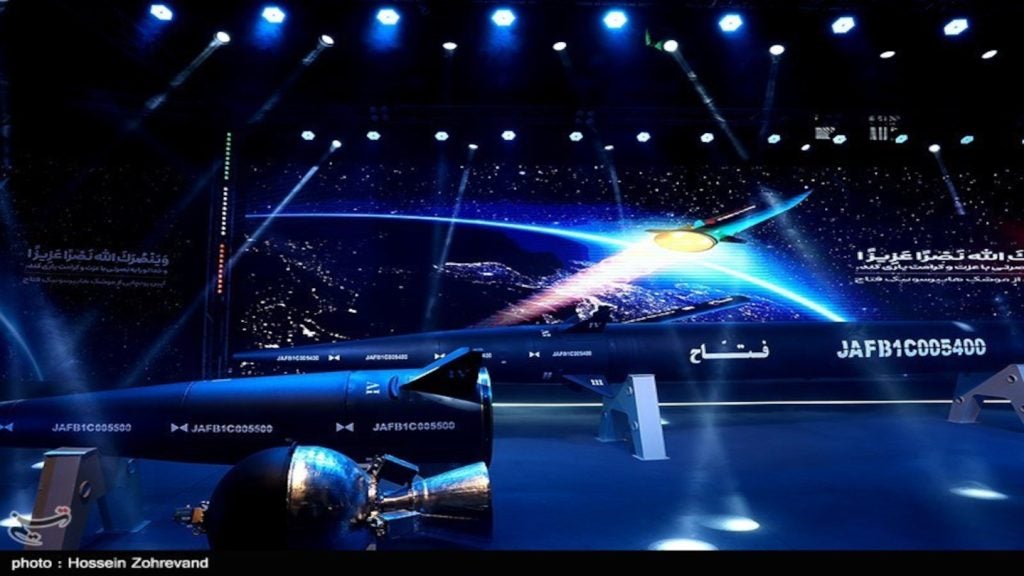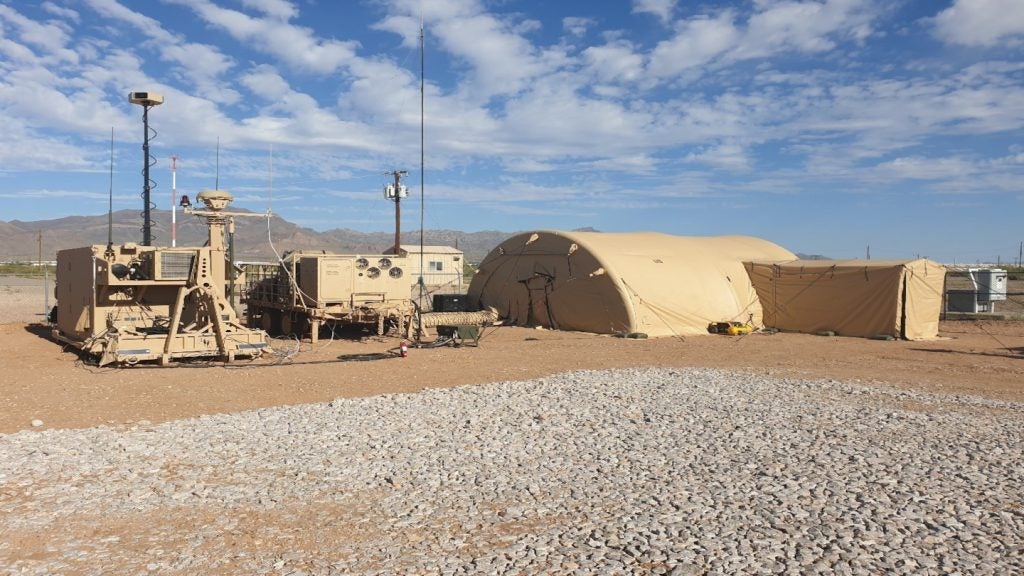
The Barracuda UAV is a demonstrator for future UAV technologies
The Barracuda demonstrator unmanned air vehicle has been developed by EADS Military Air Systems in Germany and Spain, with an industrial team of about 30 aerospace companies and specialised suppliers. The air vehicle has a radius of action of more than 200km and a maximum speed over Mach 0.6. The operating ceiling is 20,000ft.
The purpose of the Barracuda demonstrator is to demonstrate and test technologies for future agile, autonomous and network-capable UAV systems.
The first flight of the air vehicle took place in April 2006 at the San Javier Military Air Base in southern Spain. During one of the flight trials in September 2006, the Barracuda air vehicle crashed into the sea.
Barracuda construction
The demonstrator air vehicle, including swept wings, is of entirely carbon-fibre construction. The air vehicle, of length 8.25m and wingspan 7.22m, has a maximum take-off weight of 3,250kg. The vehicle has a swept horizontal tail and outwardly canted fins and rudders.
EADS Military Air Systems at its Augsburg (Germany) site is responsible for the manufacturing of the fuselage and EADS Military Air Systems in Getafe (Spain) for the construction and manufacturing of the swept wings. The air vehicle fuselage is manufactured using the vacuum assisted process (VAP) developed by EADS.
Liebherr is responsible for the design and supply of the air vehicle’s electro-mechanical actuation control system.
The Liebherr primary fly-by-wire and the secondary flight control systems provide an all-electric-aircraft capability for the Barracuda in flight.
Avionics
For reliability and safety the Barracuda has a triplex flight control and navigation system. The avionics system installed has an open and modular configuration which will allow the installation of new sensors and communications equipment.
The flight control computer is provided by MTU and the navigation system by Thales.
Payloads
The Barracuda carries a maximum payload of 300kg. The avionics system will support communications for network-enabled operations and real-time transmission of information, including broadband line-of-sight.
In the future it may support beyond line-of-sight data links, secure and jam resistant crypto-links, multifunctional information distribution system (MIDS) / Link 16 NATO tactical data link, and a satellite communications link.
Payload systems will include infrared and other electro-optical sensors and, for future applications, it may include laser target designators, a high-accuracy emitter location system (ELS) and synthetic aperture radar (SAR). Barracuda may also be capable of carrying weapon systems. The systems are installed in the central payload bay.
Turbofan engine
The Barracuda air vehicle is powered by a P&W Canada JT15D-5C turbofan engine which provides 14.2kN thrust. The position of the engine’s air intake as part of the dorsal surface and the profile of the air intake contribute to the low radar signature of the air vehicle.
Landing gear
The aircraft uses a conventional wheeled take-off and landing gear. Eaton is responsible for the design and supply of the hydraulic power system and the actuators for lowering and retracting the landing gear and for steering the nose wheel. The demonstrator air vehicle is a fully electric aircraft in flight and the hydraulics systems are used only for the landing gear actuation and nose wheel steering.
The air vehicle is fitted with E-brake electrically operated carbon brakes developed by Meggitt’s Dunlop Aerospace Braking Systems. The E-brake is a reduced-weight, high-reliability braking system for manned and unmanned aircraft.
Mission control station
A ground-based mission control station provides mission planning, monitoring and data evaluation. The air vehicle operates completely autonomously. During flight, high level commands can be entered to change pre-planned missions.
The entire system of the control station and air vehicles has a small logistical footprint, so the system is easy to operate and deploy.

